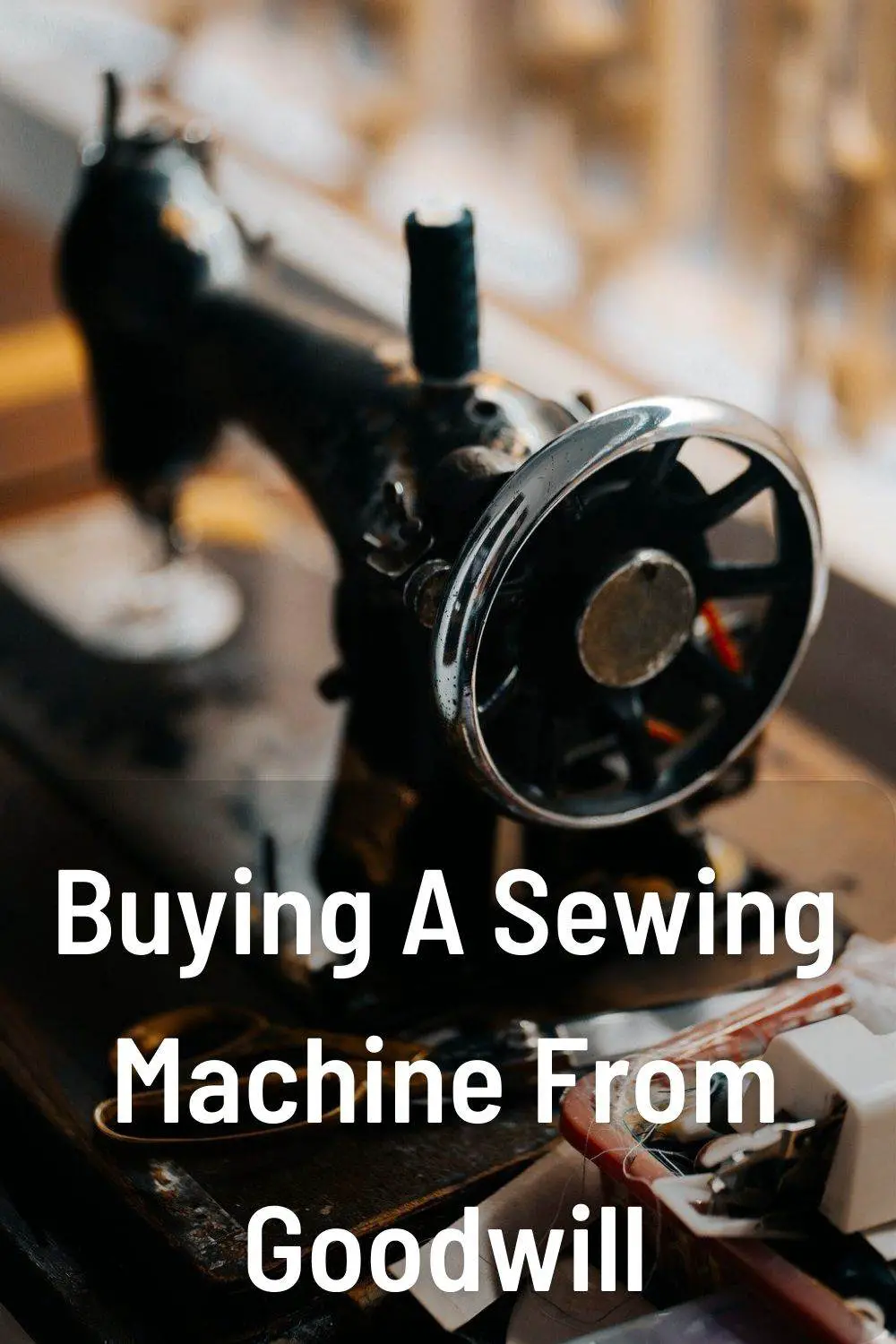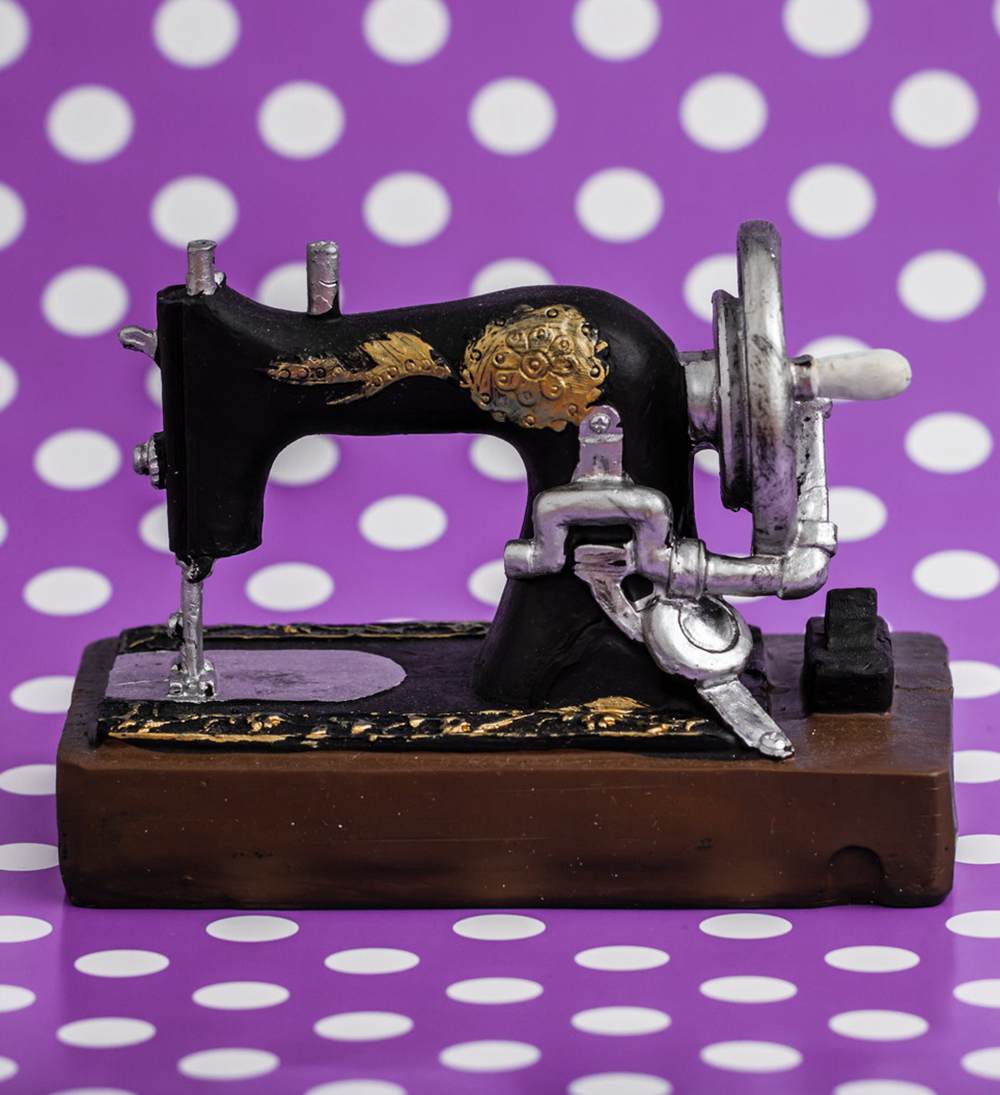
Purchasing a sewing machine from Goodwill can be a great way to get a quality machine at an affordable price. However, there are some important factors to consider when buying a used sewing machine from a thrift store. This comprehensive guide provides tips on what to look for when buying a sewing machine from Goodwill or other secondhand stores.
Table of Contents
Inspect the Sewing Machine Thoroughly
When buying any used item, it is essential to inspect it carefully before purchasing. This is especially important for a complex appliance like a sewing machine. Here are some things to look for when testing out a used sewing machine:
Check for Damage
Look over the entire machine for any visible damage. Are there any cracks, dents, or missing pieces? Do the buttons and knobs seem loose or broken? Damage could indicate the machine was dropped or improperly cared for.
Plug In and Power On
If possible, plug in the sewing machine and turn it on. Listen and watch for any concerning noises or issues. Does the motor run smoothly? Do any lights or displays work properly? Try selecting stitches to ensure the settings engage correctly.
Test Stitching
Attempt to do some test stitching on a scrap piece of fabric. Lower and raise the presser foot and make sure the fabric feeds smoothly. Look at the thread tension and straightness of the stitching. This will help reveal any internal issues.
Examine Moving Parts
Inspect points where movement occurs – the needle, presser foot, feed dogs, bobbin case, etc. The movement should be smooth and precise. clunky or imprecise motion can indicate a problem.
Check for Rust
Peek into crevices and joints for any signs of rust. Rust can impair the machine’s functionality and be difficult to remove from some areas. A little surface rust may be ok, but walk away from excessive corrosion.
Assess Noise Level
Modern sewing machines run fairly quietly. Excessive noise during operation could mean issues like worn out motors or loose parts. Do a sound check before buying.
Consider Age
Ask the seller how old the machine is and what brand it is. Very old or obscure brands may have difficulty finding replacement parts if repairs are needed.
Thoroughly inspecting a used sewing machine takes time and patience. Be sure to test all features and watch a full sewing cycle. A machine that survives close scrutiny is more likely to be a good purchase.
Research the Sewing Machine Model

Once you’ve done a hands-on inspection, take some time to research the specific sewing machine make and model. Search online to see if you can find:
- Manuals/guides – Download or view an instruction manual to learn how to thread, operate, and maintain that model. Manuals may be available on the manufacturer website.
- Replacement parts – Check if key parts like feet, needles, and bobbins are still available for purchase. Lack of parts can make repairs impossible.
- Reviews – Read reviews from other owners of that model to learn about real-world pros, cons, and issues. This can highlight potential problems to be aware of.
- Value – Estimate the original price and current resale value of the model. This will help assess if the thrift store price is truly a good deal.
Doing research will help you make an informed decision about whether the specific sewing machine is worth purchasing and can be properly cared for after purchase.
Ask About Sewing Machine History
If possible, try to learn a bit about the background of the sewing machine you’re considering. See if the thrift store seller, donor, or manufacturer (for newer models) can provide any information on:
- Previous owner – Knowing details about past use can offer clues about the machine’s condition. Was it lightly used by one owner or heavily used in a sewing factory?
- Service history – Find out if it has been regularly serviced and maintained by repair professionals. Lack of proper service increases risk of problems.
- Reason for giving away – Ask why the previous owner got rid of the machine. Discovering it had chronic issues that couldn’t be fixed is an obvious red flag.
- Included accessories – Request details on any accessories included with the machine, like extra feet, needles, or bobbins. More accessories add value.
- Age – Confirm the approximate age and date of manufacture. Very old sewing machines likely require more maintenance.
While limited information may be available, any details on the sewing machine’s background can give useful context before purchasing from a thrift store.
Have a Sewing Machine Serviced
Once you’ve bought a used sewing machine, it is wise to invest in having it professionally serviced before heavy use. A qualified sewing machine technician will:
- Clean & lubricate – Remove built-up lint and oil/grease key internal components. Proper lubrication prevents motor and part damage.
- Adjust tension – Calibrate thread tension so stitches form correctly with both upper and lower threads.
- Replace worn parts – Worn needles, bobbins, belts, gears, etc can be swapped out for new OEM parts.
- Test electronic components – Diagnose and replace any defective electronic components or circuit boards.
- Upgrade features – Some older models can be retrofitted with new capabilities like automatic thread cutting.
- Recommend maintenance – Technicians can advise on proper long-term care and maintenance steps.
Servicing gives a used sewing machine the best chance at optimal performance and longevity despite previous potential neglect. Think of it as a necessary investment in your new-to-you machine!
Learn Sewing Machine Maintenance
To keep your thrift store sewing machine running smoothly after purchase:
- Keep it clean – Regularly remove dust, thread scraps, and lint buildup on and inside the machine.
- Oil as directed – Use only sewing machine oil and lubricate as per manufacturer guidelines. Over-oiling can cause issues.
- Inspect before sewing – Check for damage, tangles, stuck threads, etc before starting a new project.
- Replace needles – Needles dull over time. Replace them frequently for best stitching results.
- Use the correct needle – Ensure you are using the right needle size and type for your thread and fabric.
- Check belt condition – Belts can become loose, cracked or damaged. Replace if needed.
- Follow storage guidelines – Only store the machine according to manufacturer specifications to prevent damage.
By caring for your thrift store find, you can keep it running smoothly for years to come! Proper maintenance and servicing are key.
Be Aware of Potential Issues
While buying a sewing machine from a thrift store can be a smart money-saving move, there are some potential drawbacks to consider:
- Higher risk of problems – Used machines have likely seen wear and tear so issues may develop sooner than new models.
- No warranty coverage – Manufacturing defects cannot be resolved if the machine is outside the original warranty period.
- Difficulty finding parts/support – For very old or obscure machines, accessories and technical assistance may be hard to obtain.
- Previous damage or neglect – Even thorough inspection may not reveal all damage or issues from previous owner misuse.
- Higher maintenance needs – More frequent servicing and part replacement is required to keep an older machine running well.
- No return policy – It can be difficult to get your money back if the used machine turns out to be defective.
While most thrift store sewing machines can be restored to working order, buyers should be realistic about the potential for more frequent repairs and maintenance.
Questions to Ask Before Buying a Used Sewing Machine
Before making the purchase, get clear answers to these key questions:
How old is the sewing machine?
- The age affects the availability of parts, manuals, and tech support. Aim for models less than 20 years old if possible.
What condition does it appear to be in?
- Carefully inspect for damage, rust, noises, or other issues as outlined earlier. Avoid machines that seem heavily deteriorated.
Does it come with any accessories?
- Needles, feet, bobbins etc add functionality and value. Lack of accessories can increase future costs.
Does it have manuals available?
- Instruction manuals are essential for understanding how to thread, operate, and care for that specific model. Online copies can substitute for physical manuals.
Have you serviced and cleaned it?
- Proper servicing and cleaning prior to sale improves performance and reduces future headaches.
Why are you getting rid of it?
- Ask the seller if there are any existing problems or reasons for giving it away. Look for honest answers not vague excuses.
Does it have any warranty coverage?
- Most thrift store machines won’t, but always check since some sellers may offer short warranties on items.
By getting all your questions answered upfront, you can feel confident bringing your Goodwill find home!
Conclusion
Buying a sewing machine from a thrift store can be a smart way to save money, as long as you carefully inspect condition, research the model, service it, maintain it properly, and are realistic about potential risks. Focus on finding a solid mid-range model and learn sewing techniques to get the most out of your bargain purchase! With some diligence and effort, pre-owned machines can deliver reliable performance. Let this guide equip you to assess options and make the smartest choice when thrift store shopping. Happy sewing!
Frequently Asked Questions
Is it worth buying a sewing machine from Goodwill?
Yes, it can definitely be worthwhile to purchase a sewing machine from Goodwill or other secondhand stores. The low prices allow you to get a good deal. However, be prepared to thoroughly inspect, research, and potentially service any used machine before relying on it for major projects.
What should I look out for when buying from Goodwill?
Carefully examine the machine for any physical damage, wear, stains, rust, etc. Give it a test run, listening for odd noises and testing stitch settings. Research the make, model, value, and ease of finding parts/accessories. Avoid very old or obscure brands that may be hard to maintain.
What’s a fair price for a used sewing machine?
Pricing can vary greatly based on brand, model, age, and condition. However, expect to typically pay $50-150 for basic to mid-range models or $200+ for higher-end brands. Pass on Goodwill machines listed for more than half the original MSRP.
Is an old sewing machine better than a new cheap one?
Not necessarily. Very old sewing machines often require more maintenance, parts replacements, and difficulty finding accessories. A new budget machine may be a better choice than a 50-year old model with unknown history. Focus on condition over age when evaluating options.
Should I get a used sewing machine serviced?
Yes, it is highly recommended to have any used sewing machine serviced by a professional before heavy usage. A servicing will clean, adjust, lubricate, replace worn parts, and address minor repairs. This investment will improve performance and longevity.